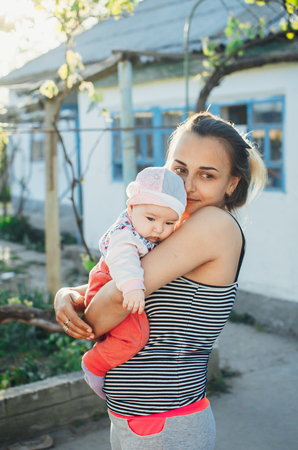1. Understanding Empathy in Early Childhood
Empathy is the ability to understand and share the feelings of others. For toddlers, this skill is just beginning to develop as they explore emotions and social interactions. While they may not fully grasp complex emotions, they start showing signs of empathy through actions like offering a toy to a sad friend or mimicking facial expressions when someone is upset.
Why Is Empathy Important for Toddlers?
Empathy plays a crucial role in a child’s social and emotional development. It helps them build strong relationships, communicate effectively, and develop kindness toward others. By fostering empathy early on, parents and caregivers can set the stage for a lifetime of positive social interactions.
How Empathy Develops in Toddlers
Toddlers go through different stages as they learn to recognize and respond to emotions. Here’s a simple breakdown:
| Stage | Description |
|---|---|
| Birth to 12 Months | Babies respond to emotions by mirroring expressions or crying when they hear another baby cry. |
| 12 to 24 Months | Toddlers begin recognizing emotions in others and may try to comfort someone who is upset. |
| 24 to 36 Months | Toddlers start understanding that others have feelings separate from their own and show more intentional acts of kindness. |
The Link Between Empathy and Healthy Relationships
A toddler who learns empathy early on will have an easier time forming friendships, resolving conflicts, and expressing emotions appropriately. This foundation supports their ability to navigate relationships in preschool, elementary school, and beyond.
2. Modeling Kindness and Compassion
Toddlers learn best by watching the people around them. When parents and caregivers demonstrate kindness and compassion in their daily interactions, little ones naturally absorb these behaviors through observation and imitation.
Everyday Ways to Model Empathy
Here are some simple ways you can model empathy for your toddler:
| Situation | How to Model Empathy |
|---|---|
| Your child drops their toy and gets upset. | Kneel down to their level, acknowledge their feelings, and say, “I see that youre sad because your toy fell. Lets pick it up together.” |
| You see someone struggling with grocery bags. | Offer to help and say out loud, “Let’s help them carry their bags. It feels good to be kind!” |
| A friend or sibling is feeling sad. | Encourage your toddler to comfort them by saying, “Maybe we can give them a hug or draw a picture to make them feel better.” |
| Your child makes a mistake or spills something. | Instead of reacting negatively, show understanding: “That was an accident! Lets clean it up together.” |
The Power of Positive Language
The way you speak about emotions influences how your toddler understands and expresses empathy. Use phrases like:
- “I understand how you feel.”
- “That must have been hard for you.”
- “It’s okay to feel sad. I’m here for you.”
- “Let’s think of a way to help.”
- “Being kind makes others happy!”
Caring for Others Together
You can also reinforce empathy by engaging in activities that encourage kindness, such as:
- Caring for Pets: Show your child how to gently pet and feed animals, explaining how our actions affect them.
The Impact of Your Actions
Toddlers are always watching and learning from you. By consistently showing kindness, understanding, and emotional awareness in daily life, you provide them with a strong foundation for developing empathy themselves.
![]()
3. Encouraging Emotional Expression
Helping toddlers express their emotions is a crucial step in developing empathy. When children can identify, verbalize, and process their feelings, they become better at understanding others emotions as well. Encouraging emotional expression builds emotional intelligence and helps toddlers navigate social situations with kindness and awareness.
How to Help Toddlers Identify Their Emotions
Toddlers often experience big emotions but may not have the words to express them. Teaching them to recognize and name their feelings is the first step in emotional expression.
| Emotion | How to Recognize It | Ways to Help Toddler Express It |
|---|---|---|
| Happy | Smiling, laughing, excited body movements | “You look so happy! What made you smile?” Encourage storytelling or drawing happy moments. |
| Sad | Crying, frowning, quietness | “I see youre feeling sad. Do you want a hug?” Offer comfort and let them talk about why they are upset. |
| Angry | Tense body, clenched fists, loud voice | “Its okay to feel angry. Lets take deep breaths together.” Teach calming techniques like squeezing a stress ball. |
| Frustrated | Sighing, stomping feet, whining | “It looks like youre frustrated. Can I help?” Encourage problem-solving by asking what they need. |
| Nervous | Avoiding eye contact, clinging to a parent, fidgeting | “Are you feeling nervous? Its okay! Lets take it one step at a time.” Provide reassurance and encourage deep breathing. |
The Power of Verbalizing Feelings
Toddlers learn by example. When parents and caregivers openly express their own emotions in simple terms, children begin to understand that talking about feelings is normal and healthy. Try saying things like:
- “Im feeling tired right now. I think I need a little rest.”
- “Im really happy because we had such a fun day together!”
- “I feel frustrated when things don’t go as planned, but I take deep breaths to calm down.”
This kind of modeling teaches toddlers how to communicate their own emotions effectively.
Coping Strategies for Big Emotions
Toddlers need guidance on how to manage strong emotions in a positive way. Here are some simple techniques to help them cope:
Belly Breathing
Teach your toddler to take slow, deep breaths by placing their hand on their belly and watching it rise and fall.
The Calm-Down Corner
Create a cozy space with soft pillows and favorite books where your child can go when they need a break from overwhelming emotions.
Name It to Tame It
Toddlers feel more in control when they can name their emotions. Encourage them to say, “Im mad,” instead of acting out.
The Hug Method
A warm hug can be incredibly soothing for an upset toddler. Physical touch provides comfort and security.
The Link Between Emotional Awareness and Empathy
The more toddlers understand their own feelings, the easier it is for them to recognize emotions in others. When they learn how to express sadness, frustration, or joy in healthy ways, they also become more compassionate toward friends and family members experiencing similar emotions.
Praising your child when they show empathy—like offering a toy to a sad friend or giving a hug—reinforces their ability to connect with others emotionally. By fostering emotional expression early on, youre laying the foundation for lifelong emotional intelligence and kindness.
4. Teaching Empathy Through Play and Stories
One of the best ways to help toddlers develop empathy is through play and storytelling. These activities allow young children to explore emotions, understand different perspectives, and practice kindness in a fun and engaging way.
Storytelling as a Tool for Empathy
Reading books with emotional themes helps toddlers recognize feelings in others. By discussing the characters emotions and actions, parents can guide their little ones to think about how others feel.
How to Use Storytelling to Teach Empathy:
| Method | Example |
|---|---|
| Ask open-ended questions | “How do you think the character feels?” or “What would you do if this happened to you?” |
| Use facial expressions and voice tones | Mimic the emotions of the characters to help toddlers connect with their feelings. |
| Encourage role-playing from stories | “Let’s pretend we are the characters. How would you feel if this happened?” |
Pretend Play and Emotional Awareness
Pretend play allows toddlers to step into someone else’s shoes, helping them develop compassion and social skills. Playing with dolls, stuffed animals, or dress-up costumes encourages them to act out different emotions and situations.
Pretend Play Ideas for Teaching Empathy:
- Caring for a doll or stuffed animal: Let your child feed, dress, or comfort their toy as if it has real feelings.
- Pretend doctor or nurse: Encourage your toddler to take care of a “sick” toy by showing concern and kindness.
- Create real-life scenarios: Act out situations like sharing toys or comforting a sad friend.
Interactive Activities That Build Empathy
Toddlers learn best through hands-on experiences. Simple activities can reinforce the concept of understanding others’ feelings.
Fun Activities to Practice Empathy:
- “Emotion Matching Game”: Show pictures of different facial expressions and ask your child to guess how the person is feeling.
- “Kindness Jar”: Every time your child does something kind, add a small token to a jar to celebrate their empathy.
- “Mirror Play”: Have your toddler mimic different emotions in front of a mirror to recognize facial expressions.
Toddlers naturally learn through play, so incorporating storytelling, pretend play, and interactive activities into their daily routine makes empathy development both enjoyable and effective.
5. Reinforcing Positive Social Behaviors
Helping toddlers develop empathy involves consistently reinforcing positive social behaviors. When children learn how to share, apologize, and show kindness, they build essential emotional and social skills that will benefit them throughout life. By using praise and gentle guidance, parents can encourage these behaviors in a way that feels natural and rewarding for their little ones.
Encouraging Sharing
Sharing is a fundamental part of building empathy. Toddlers may struggle with this concept at first, but with patience and encouragement, they can learn to take turns and consider others’ feelings. Here are some ways to help:
- Model Sharing: Show your toddler how to share by offering them a toy or snack and saying, “I’d love to share this with you!”
- Praise Generosity: Whenever your child shares, acknowledge it with positive reinforcement like, “That was so kind of you to share your toy!”
- Use Turn-Taking Games: Play games that require taking turns, such as rolling a ball back and forth or passing blocks while building a tower.
Teaching the Importance of Apologizing
Toddlers may not always understand why apologizing is important, but helping them recognize when theyve hurt someone—intentionally or unintentionally—can foster empathy. Try these strategies:
- Explain Feelings: If your child grabs a toy from another child, gently say, “Look at their face—they feel sad because they wanted to play too.”
- Offer Simple Apologies: Encourage your toddler to say “Im sorry” or use alternative phrases like “I didnt mean to make you sad.”
- Praise Sincere Efforts: When your child makes an effort to apologize, acknowledge it by saying, “That was very thoughtful of you!”
Praising Acts of Kindness
Praising acts of kindness helps toddlers associate positive emotions with being considerate. Reinforce kind behavior with words and actions:
| Kind Behavior | Praise & Encouragement |
|---|---|
| Your child comforts a friend who is upset. | “That was so sweet! You made them feel better.” |
| Your toddler offers a toy to a sibling. | “Youre such a great sharer! That was very kind.” |
| Your child helps clean up without being asked. | “Thank you for helping! Youre such a great helper.” |
The Power of Gentle Guidance
Toddlers thrive on gentle guidance rather than strict correction. Instead of scolding negative behaviors, redirect them toward more positive choices.
- Avoid Harsh Punishment: Instead of saying “Dont grab toys!” try “Let’s take turns playing with it.”
- Create Opportunities for Kindness: Set up activities where toddlers can practice sharing and cooperation.
- Celebrate Small Wins: Even small steps towards kindness should be acknowledged and encouraged.
The more toddlers experience kindness and empathy from those around them, the more naturally they will adopt these behaviors themselves. With patience, praise, and consistent reinforcement, young children can grow into compassionate individuals who understand the value of treating others with care and respect.


